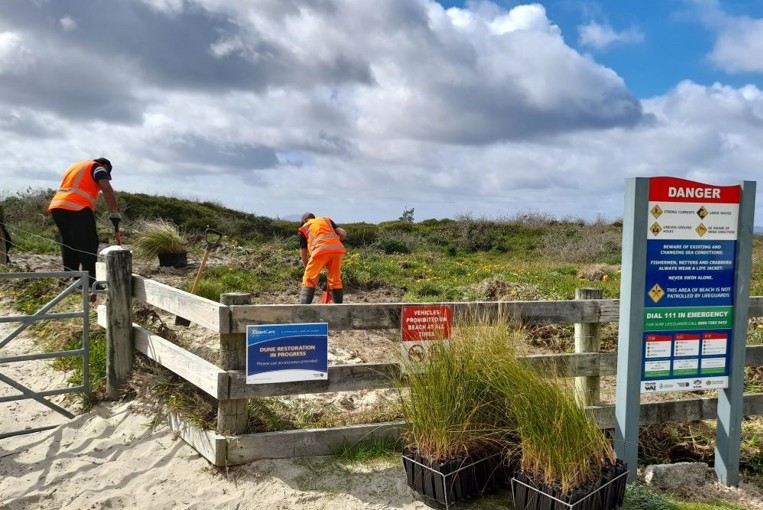Story
Duneland restoration at Ruakākā Wildlife Refuge
It was a bad start to 2020 for the Ruakākā dunes; in February a fire burned a large area of mainly native vegetation in the wildlife refuge.
Since then, great strides have been taken to restore the dunes in this area. Northland Regional Council developed a weed management plan for the dunelands from south of the Ruakākā estuary to just south of Paradise Shores. A lot of work had already been done by the local community, including Bream Bay Coastal Care Trust and the plan was aimed at supporting their work and helping them work as effectively as possible.
Over the winter months last year, Whangarei District Council and the Department Of Conservation had staff and contractors working in the dune area, killing wattle and other weeds and planting native spinifex and pīngao provided by NRC.
Bream Bay Coastal Care Trust was busy as always weeding and planting and they held several working bees, attended by Ruakaka Primary School and residents of the area.
“Controlling the weeds is essential to protecting the native flora and fauna of the area. It’s all about bringing balance back – preventing damaging weeds from dominating native plants that naturally protect the dunes,” says Laura Shaft, Northland Regional Council’s CoastCare Co-ordinator.

Whangarei District Council contractors removing weeds and replacing them with native dune plants provided by Northland Regional Council.
There are many weedy species in the area, but the key offenders are coastal wattle, agapanthus and tree lupin. These weeds change the nature of the dune area, reducing its ability to repair from erosion and disrupting the growth of native plants, over time displacing them,” Ms Shaft says.
So far, the progress made at Ruakākā is a significant step forward for an area badly affected by the fire and full of weeds. It’s a team effort, but Ruakākā Wildlife Refuge is well on its way to a beautiful future.
Spinifex and pīngao are native plants that protect dunes from erosion and are a good indicator of biodiversity in a coastal environment.
Pīngao only grows naturally in New Zealand in mobile dune areas. It traps wind-blown sand between its leaves, around its base and with its long rope-like horizontal stems. Pīngao helps create an environment in which other native coastal species can establish and flourish.
Spinifex has distinctive runners that spread out from the plant into bare areas of sand at a rate of several metres per year when the conditions are right. Vehicles and feet easily damage these runners, which is why it’s important to keep to marked tracks on the beach. Roots form at intervals along the runners, and from there new plants will emerge.
In this way – if other plants’ roots don’t hinder them – spinifex can colonise large areas of dune if there is good sand movement. The way they blow around the beach makes spinifex seed head easy to identify, as they look like ‘tumbleweeds’.
Both native spinifex and pīngao move with the sand, adapting to their environment and protecting large areas of the dunes if they aren’t disturbed.
Please keep all vehicles off the dunes and avoid walking on plants by keeping to marked tracks. Spinifex and pīngao are very vulnerable to damage by being walked or driven over. Please look after our dunes.
Sign up to CoastCare’s enewsletter for updates on the great work happening around Northland’s coast.
